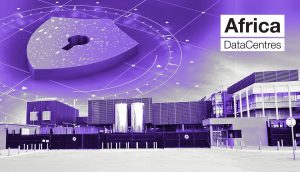Just a year ago sustainability would have been a critical factor on the minds of every CIO and business owner, and while more recent events have shifted the focus onto issues such as business continuity, collaboration, and cost reduction, the core issue of sustainability is just as relevant today as it was six months ago.
At its heart, sustainability is about ensuring that an organization conducts itself in a manner that minimises its impact on the global or local environment, community, society, or economy. This doesn’t just imply that they need to be more “green” in their thinking, but also that they extend this ethos to all of their partners, finding ways to ensure that all elements of their business contribute positively to the sustainability of the planet.
Technology is the one element that all organisations, large and small, have in common and the modern data centre is another common element. Whether it’s a one-person operation using Gmail or a massive multinational using the cloud to run their SAP applications, these all require data centres to provide their users with access to applications and data.
Now and then articles appear commenting on the carbon footprint of the applications hosted in these data centres, how sending just one less mail per year would save the equivalent of tens of thousands of flights between London and Madrid. However, Katie Hill, Director of Power Management and Strategic Initiatives at Africa Data Centres explains that these reflect the world we live in today, but don’t understand the value that modern data centres bring.
A tool of mass efficiency
“Once you accept we live in a technological society and we’re going to use that technology to communicate, conduct business and entertain ourselves, then you need to start asking what the most efficient way to deliver those services is,” she comments.
“Compared to the alternatives, such as running a multitude of smaller data centre locations, the large, centralised data centre is the most energy-efficient method for delivering services to companies and consumers.”
“While sustainability encompasses several broad issues; from a data centre perspective it all comes down to energy efficiency,” she says. “And because of our business model, we are incentivised to be as energy-efficient as possible.”
When the number one cost associated with running your business is electricity, the cost of energy is directly related to how competitive your services are.
How sustainable this power is largely related to the source of grid power in a specific location.
“In Kenya, for example, 90% of electricity is generated from renewable sources such as geothermal, while in South Africa most power still comes from thermal power stations and, as such, it has a large carbon footprint.”
Tapping renewables
“We do what we can to improve the sustainability of our power sources, but the effectiveness of this is determined by several factors.
“The simplest part of ensuring that our power supply is more sustainable is installing on-site generation capacity. However, data centres are compact installations and this limits the number of solar panels you can have onsite.
“When regulations allow we can also tap into installations on adjoining properties, but that is also limited in their scale,” she comments.
Where data centre operators can make a real difference is when the regulations allow them to sign a long-term power purchase agreement with a renewable power provider. Having long-term contracts in-place often ensures that these renewable power generators get financed and built, making the entire local grid more sustainable.
“With the current instability in the world, companies are going to be looking for ways to optimise how they deliver services to their internal and external customers, and this is going to accelerate the use of cloud services and co-located data centre facilities. The result of this is not that they will have to sacrifice some of their sustainability goals, but rather they’ll be improving the energy efficiency of the technology services they consume,” she concludes.




